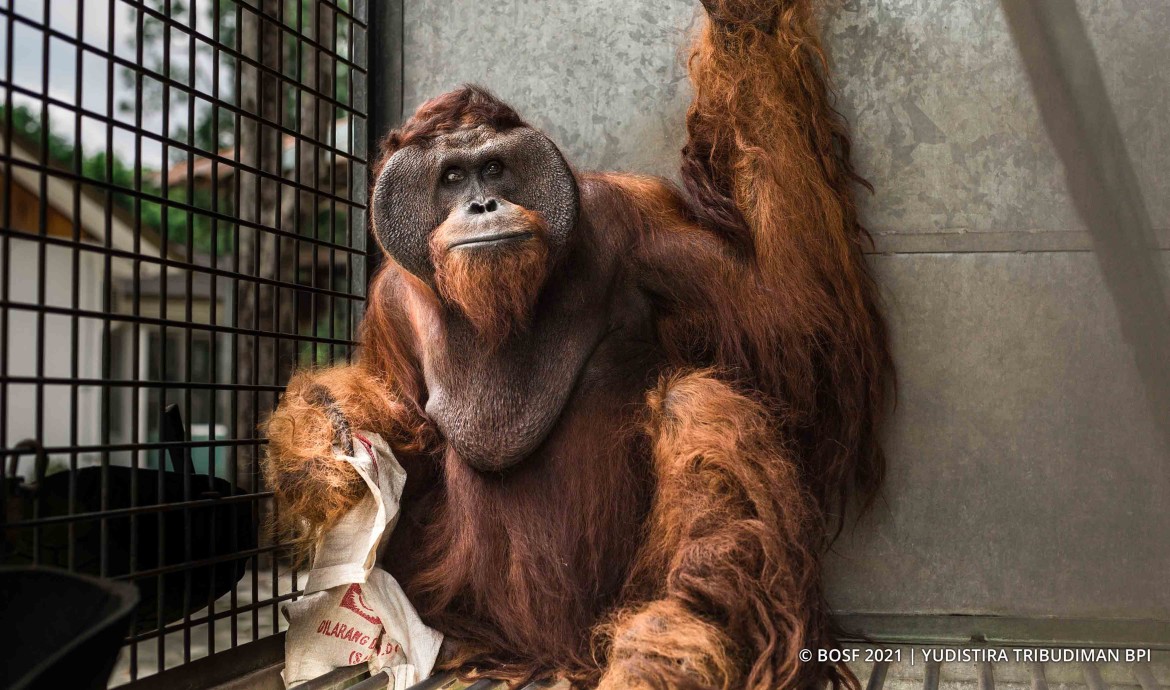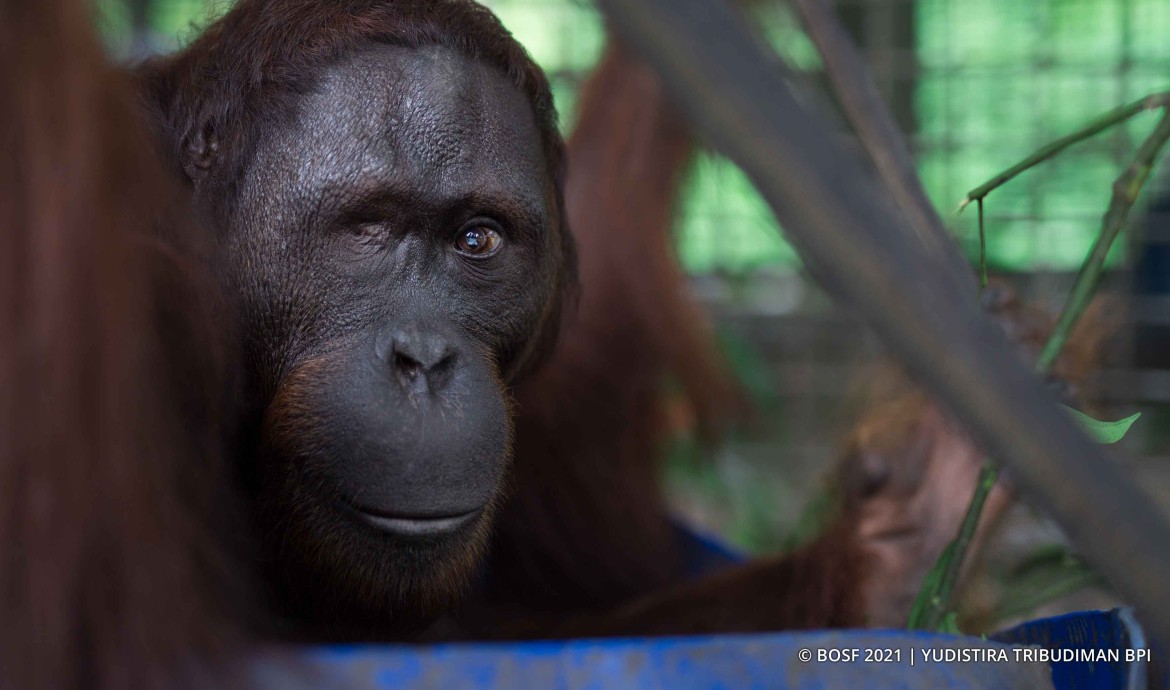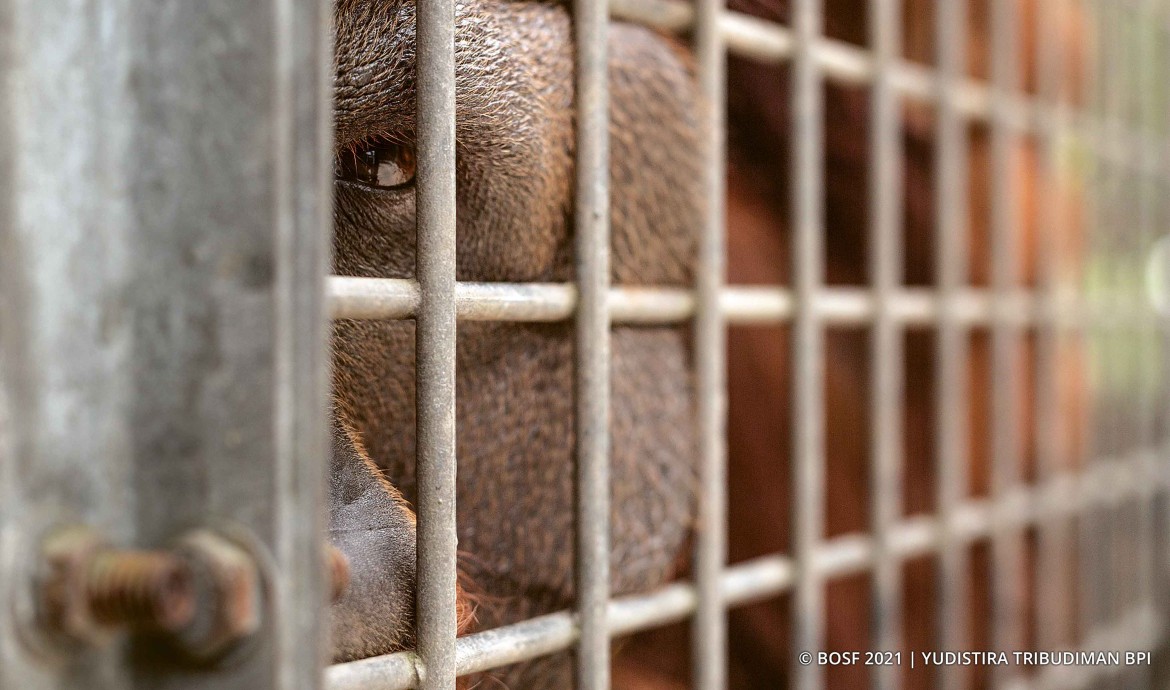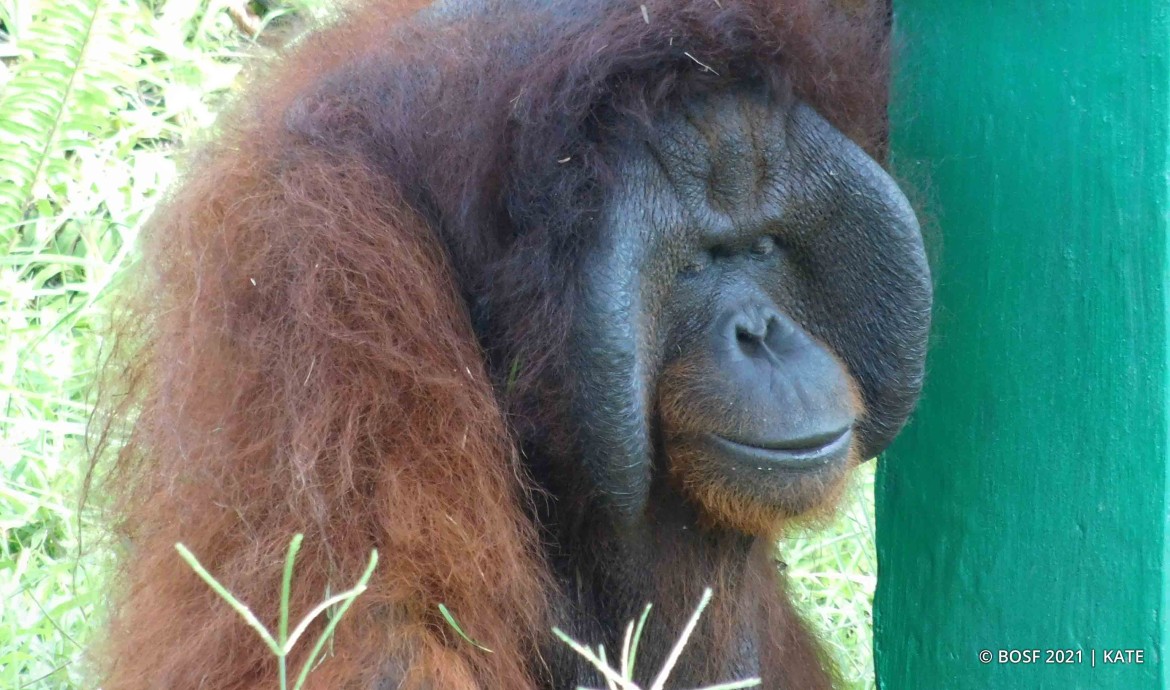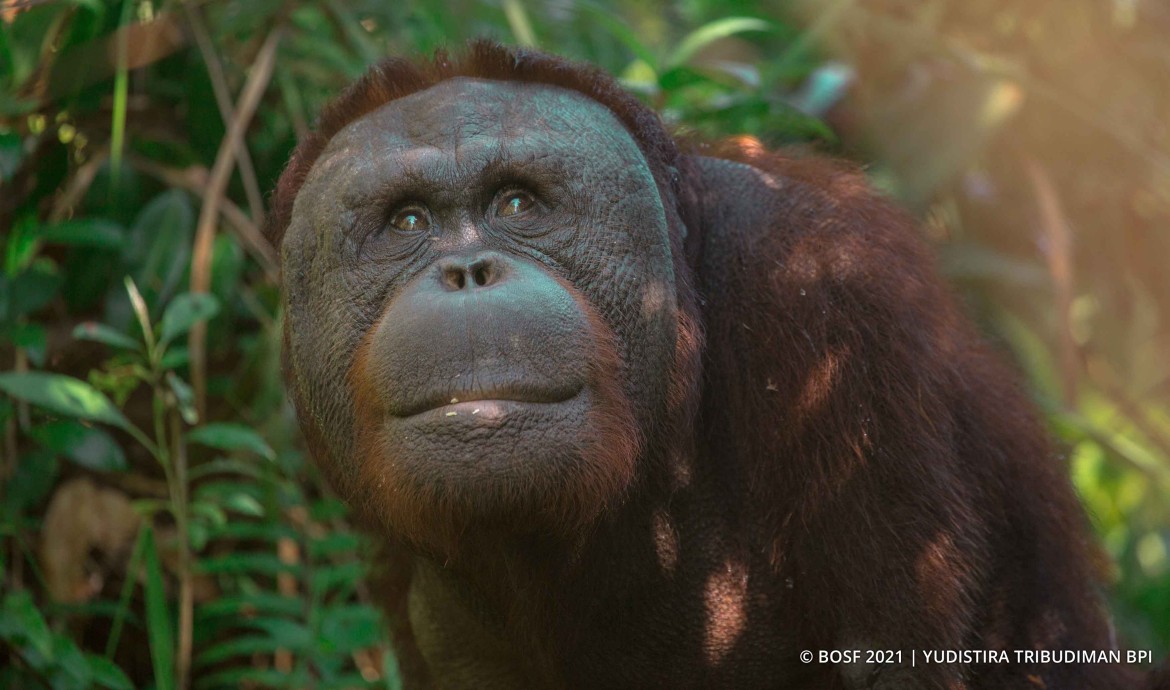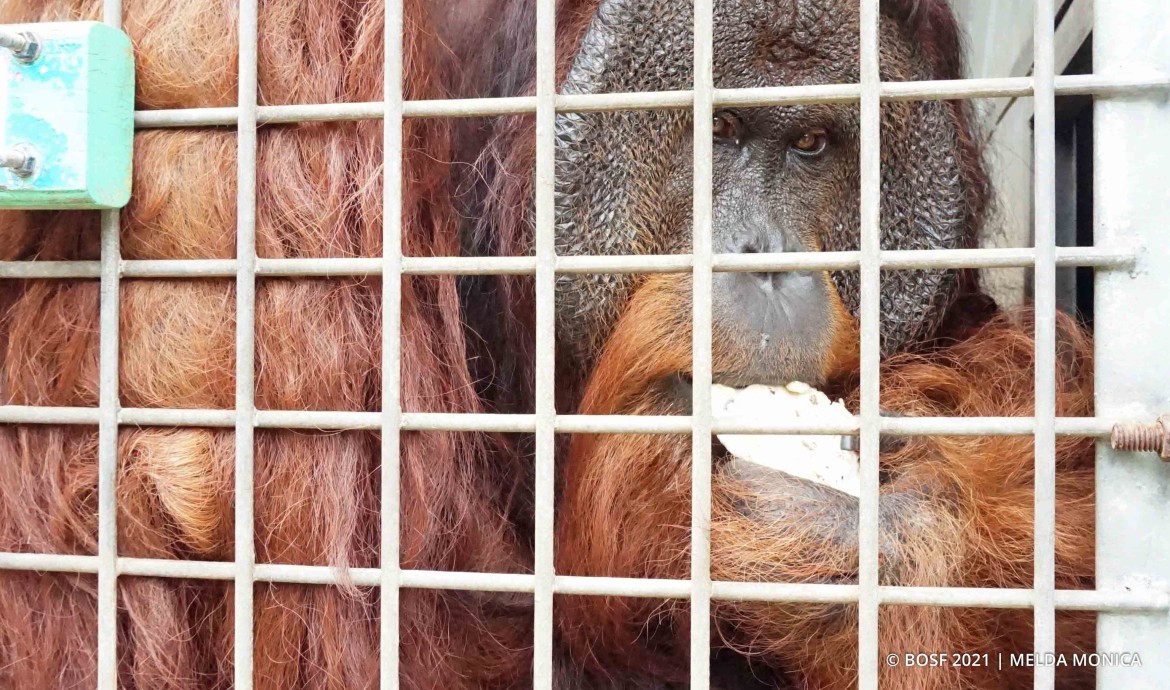A Future for Unreleasable Orangutans
Date Posted 12/2/2021
Text by: BOS Foundation Communications Team, Bogor, Indonesia
Not all orangutans in rehabilitation centers are able to successfully complete the rehabilitation process and return to living wild and free in the forest. For a variety of reasons, these orangutans will have to rely on human assistance and tender loving care for the rest of their lives. How did this become their fate and what does the future hold for them?
The unfortunate reality is that there are orangutans in rehabilitation centers who, while undergoing the rehabilitation process, show very slow progress or none at all. These individuals cannot keep up with their peers in developing the natural skills and behaviors needed to survive independently in the wild. The struggle for these orangutans is often due to the extended time they spent in captivity starting from a young age.
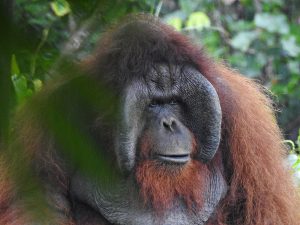 Adopt an unreleasable cheekpadder!
Adopt an unreleasable cheekpadder!
Meet handsome Papa
Adopt Papa
There are also some orangutans who suffer from infectious diseases, such as tuberculosis and hepatitis B or C, putting them at risk for relapse. Some diseases can also pose a risk of transmission to the broader orangutan population and, because of this, the infected individuals must be kept in isolation. In rehabilitation centers, orangutans with infectious diseases are cared for in a specially designed areas.
While our aim and hope is to rehabilitate every orangutan we rescue, we accept that this is not always possible.
Other orangutans who have little hope of being released into the wild are those with severe physical limitations. Examples of such limiting disabilities include multiple missing limbs and partial or complete blindness. There are an estimated 210 ‘unreleasable’ orangutans among the 416 orangutans currently being cared for at the two BOS Foundation rehabilitation centers.
Read more: Unreleasable Orangutans
However, we cannot emphasize enough that orangutans who lack vital survival skills and natural behaviors STILL have the chance to live outside of an enclosure on a sanctuary islands. These forested islands are regularly monitored, allowing for unreleasable orangutans to live a semi-wild life while still receiving all the support they need from our teams. Small sanctuary islands can also accommodate orangutans with physical disabilities who have acquired sufficient natural skills and behaviors - like Kopral from Samboja Lestari. Handsome Kopral is missing his arms!
Read more: Kopral is Now Living on an Island!
Unfortunately, there are not enough sanctuary islands for all of these orangutans, so while we prepare more suitably-sized sanctuary islands, they must wait in caged enclosures. Orangutans with infectious diseases, meanwhile, are treated in special quarantine complexes to prevent the spread of their disease to healthy populations.
Anih, a female orangutan who was rescued in 1992, is one such individual who is physically fit but deemed unreleasable. She is currently residing on Island #6, a man-made island in Samboja Lestari. There she is able to enjoy life in the open air, under the supervision of expert technicians and a dedicated veterinary staff. She is lucky, compared to other unreleasable orangutans who are still waiting in cages or enclosures, as space on the sanctuary islands is limited.
The biggest challenge in providing sanctuary for these unreleasable orangutans is securing the funds required. Between the costs for decades of food and medication and the expenses associated with building new, appropriate sanctuary enclosures and islands, providing lifelong care requires more funding than what is needed to put an orangutan through the rehabilitation process.
Unreleasable Orangutans in Borneo Need Your Help!
Crypto is the key that unlocks the cages.
Make a tax-deductible crypto donation today.
Learn more about donating crypto here.

